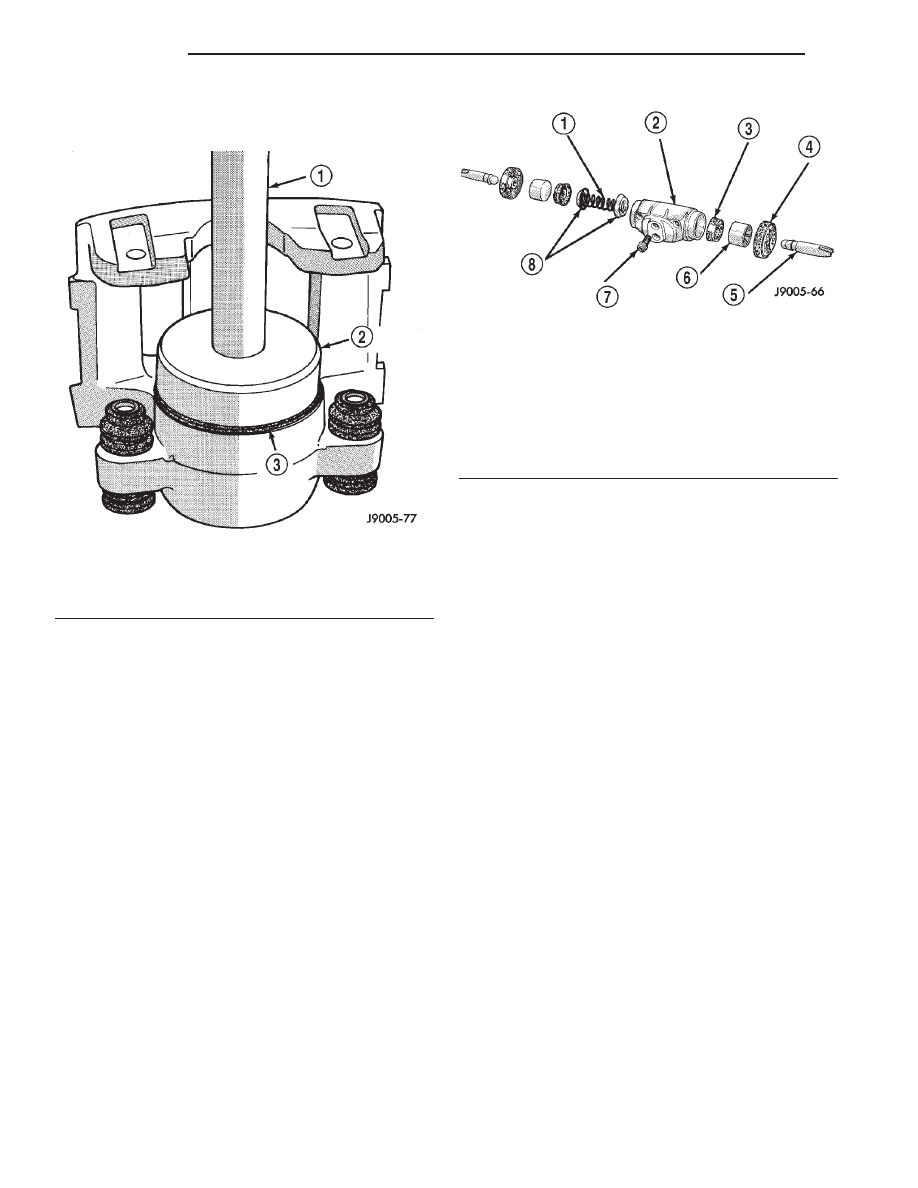Jeep XJ. Manual - part 53

(8) Seat dust boot in caliper with Installer Tool
C-4842 and Tool Handle C-4171 (Fig. 54).
(9) Replace caliper bleed screw if removed.
WHEEL CYLINDER
DISASSEMBLY
(1) Remove push rods and boots (Fig. 55).
(2) Press pistons, cups and spring and expander
out of cylinder bore.
(3) Remove bleed screw.
ASSEMBLY
(1) Lubricate wheel cylinder bore, pistons, piston
cups and spring and expander with clean brake fluid.
(2) Install first piston in cylinder bore. Then
install first cup in bore and against piston. Be sure
lip of piston cup is facing inward (toward
spring and expander) and flat side is against
piston.
(3) Install
spring
and
expander
followed
by
remaining piston cup and piston.
(4) Install boots on each end of cylinder and insert
push rods in boots.
(5) Install cylinder bleed screw.
CLEANING AND INSPECTION
CALIPER
CLEANING
Clean the caliper components with clean brake
fluid or brake clean only. Wipe the caliper and piston
dry with lint free towels or use low pressure com-
pressed air.
CAUTION: Do not use gasoline, kerosene, thinner,
or similar solvents. These products may leave a
residue that could damage the piston and seal.
INSPECTION
The piston is made from a phenolic resin (plastic
material) and should be smooth and clean.
The piston must be replaced if cracked or scored.
Do not attempt to restore a scored piston surface by
sanding or polishing.
CAUTION: If the caliper piston is replaced, install
the same type of piston in the caliper. Never inter-
change phenolic resin and steel caliper pistons.
The pistons, seals, seal grooves, caliper bore and
piston tolerances are different.
The bore can be lightly polished with a brake
hone to remove very minor surface imperfections
(Fig. 56). The caliper should be replaced if the bore is
severely corroded, rusted, scored, or if polishing
would increase bore diameter more than 0.025 mm
(0.001 inch).
Fig. 54 Piston Dust Boot Installation
1 – HANDLE C-4171
2 – INSTALLER C-4842
3 – DUST BOOT
Fig. 55 Wheel Cylinder Components–Typical
1 – SPRING
2 – CYLINDER
3 – PISTON CLIP
4 – BOOT
5 – PUSH ROD
6 – PISTON
7 – BLEED SCREW
8 – CUP EXPANDERS
5 - 28
BRAKES
XJ
DISASSEMBLY AND ASSEMBLY (Continued)